Hursley Park House (1720 - 1821)
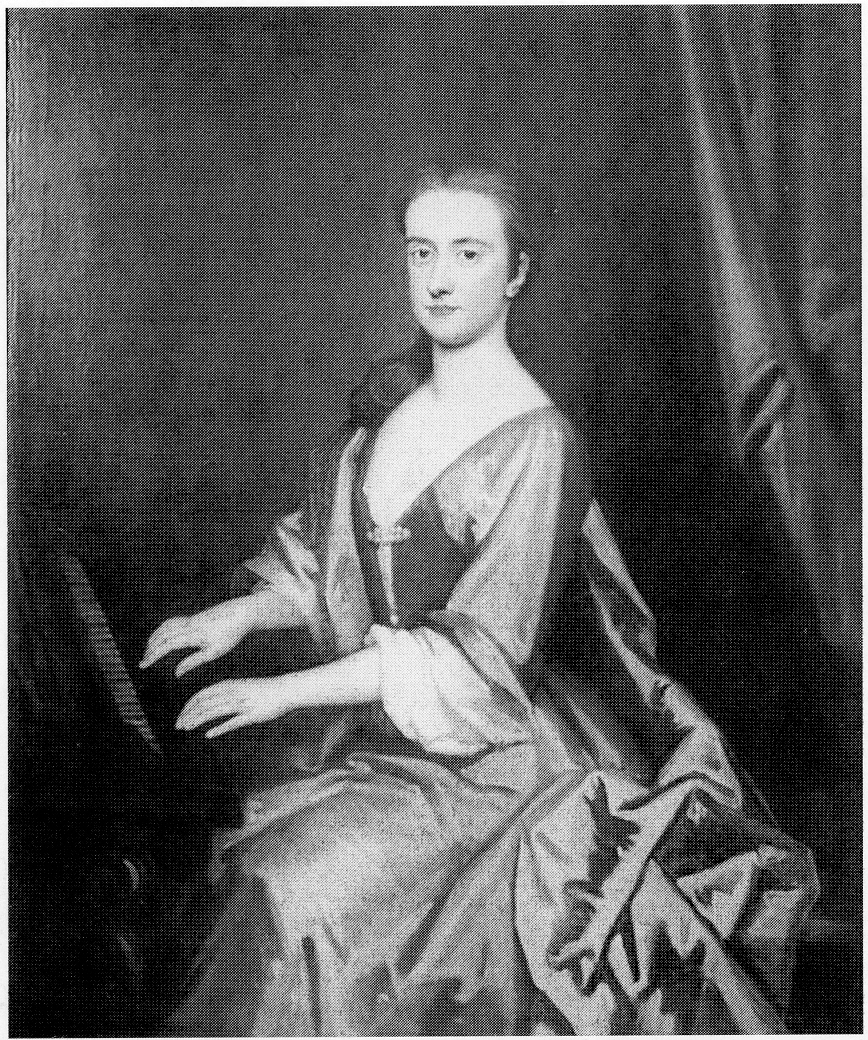 Lady Betty Heathcote, wife of Sir William
Lady Betty Heathcote, wife of Sir William
Since its erection, the house has at different times been referred to as the Mansion House, the Park House, and the Lodge. No regular architect seems to have been employed, and Sir William Heathcote made all the contracts and supervised the building of Hursley Park House between the years 1721 and 1724, with assistance from an uncle and two friends.
One John Draper was clerk of the works and he probably had some architectural responsibilities. In an account book dated 30th March 1730, Sir William Heathcote wrote:
An acct: how much 1 have spent in building Hursley Lodge.
The house besides all the old materials of the old > seat, which I compute save me above £3,000 £11,000
A new Brew House, Laundry about £500
My Garden - about £800
All charges in bringing the water to the house £1,200
New paleing in my park about £1,000
New farm houses etc about £500 £15,000
From opinions of the day and subsequent comments, the original concept of a spacious building of handsome proportions certainly seems to have been achieved.
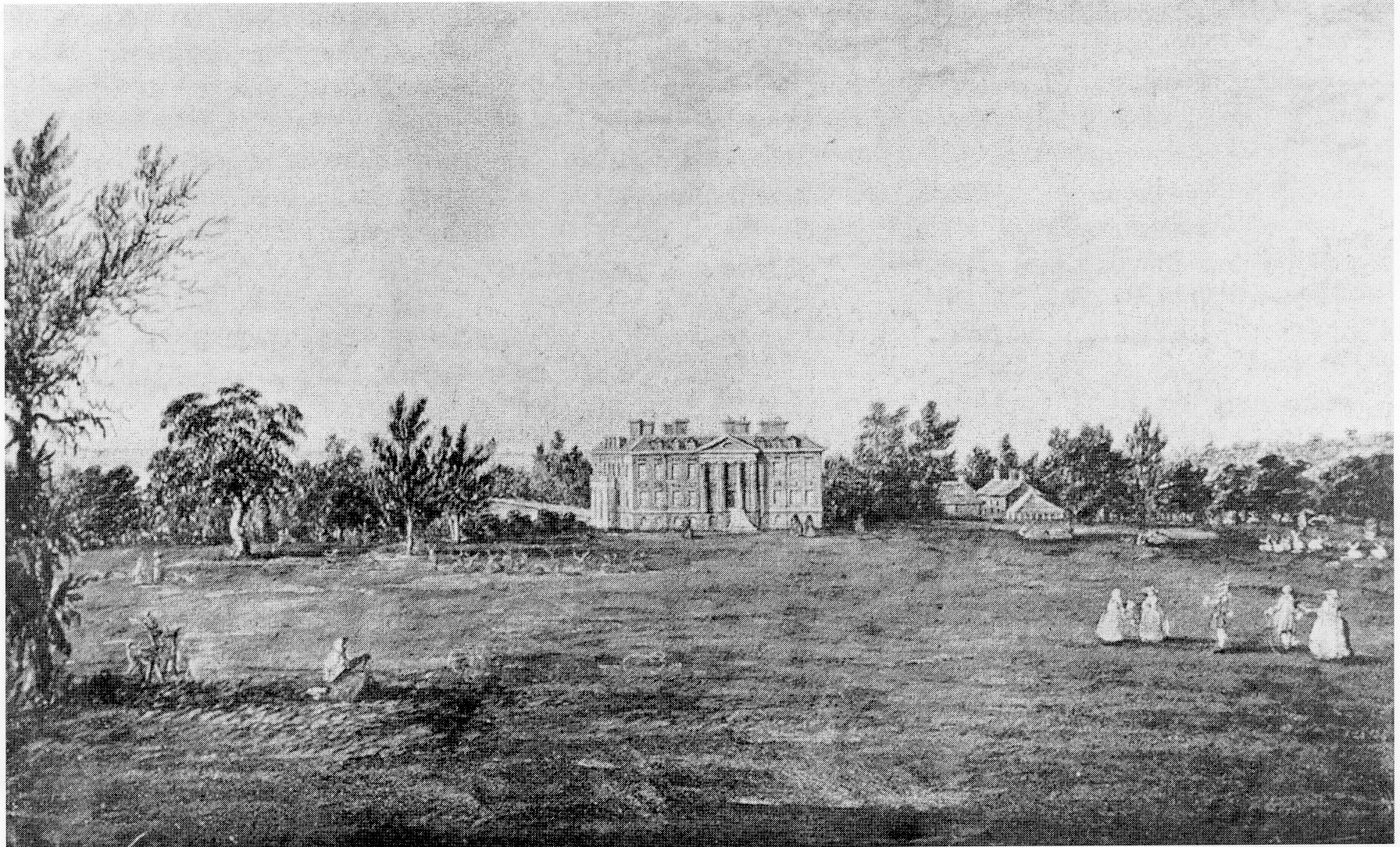 Hursley House from the north, 1725
Hursley House from the north, 1725
This Hursley Park House forms the heart of the present house: the two wings, porte- cochere and conservatory were added in 1902- 1903. (A porte-cochere is a roofed structure extending from the entrance of a building to shelter from the weather those getting in and out of vehicles.) Although built during the reign of George I, the house is typical of the period of Queen Anne (the previous monarch), being severely straight in its lines both inside and out. The house is built of red brick quoined with stone; it has large framed sash windows with small inset brick panels above them and, when originally built, it had stone porticos at the east and west ends featuring three Doric columns in each. These porticos complemented the other two porticos of four huge Doric pilasters and pediments in the centre of the north and south faces of the house. The plan of the house was that of a rectangle, 110 feet (34 m) long by 62 feet (19 m) wide. Each floor had windows of identical design, and on the north and south faces they were on a common pitch of 10 feet (3 In). On the east and west faces, the window pattern was made regular with inset brick panels to balance the appearance. The windows, together with the building’s other characteristics, gave the house a very symmetrical form that was popular in the eighteenth century. The accompanying floor plans of the lower ground floor (basement) and ground floor were copied from the builder’s drawings in about 1735. Unfortunately, the corresponding plans for the first and second floors have not been found. These plans show the layout that lasted until about 1820.
The lower ground floor plan can be easily traced today. The main east to west corridor had a door at each end under the three column porticos with steps rising to ground level. The only three rooms that can be functionally identified are the kitchen in the centre of the north side, the scullery leading off, and the servant’s hall in the centre of the south side. A feature of the servant’s hall was a long table called ‘Cromwell’s Table’ which came from the dining hall of the previous Tudor Lodge; the table still exists in private ownership, and is so tall that the diners’ feet are some inches off the floor using the appropriate chairs. Also on the lower ground floor were other domestic offices; cellar store rooms in the centre of the house and some accommodation for male staff.
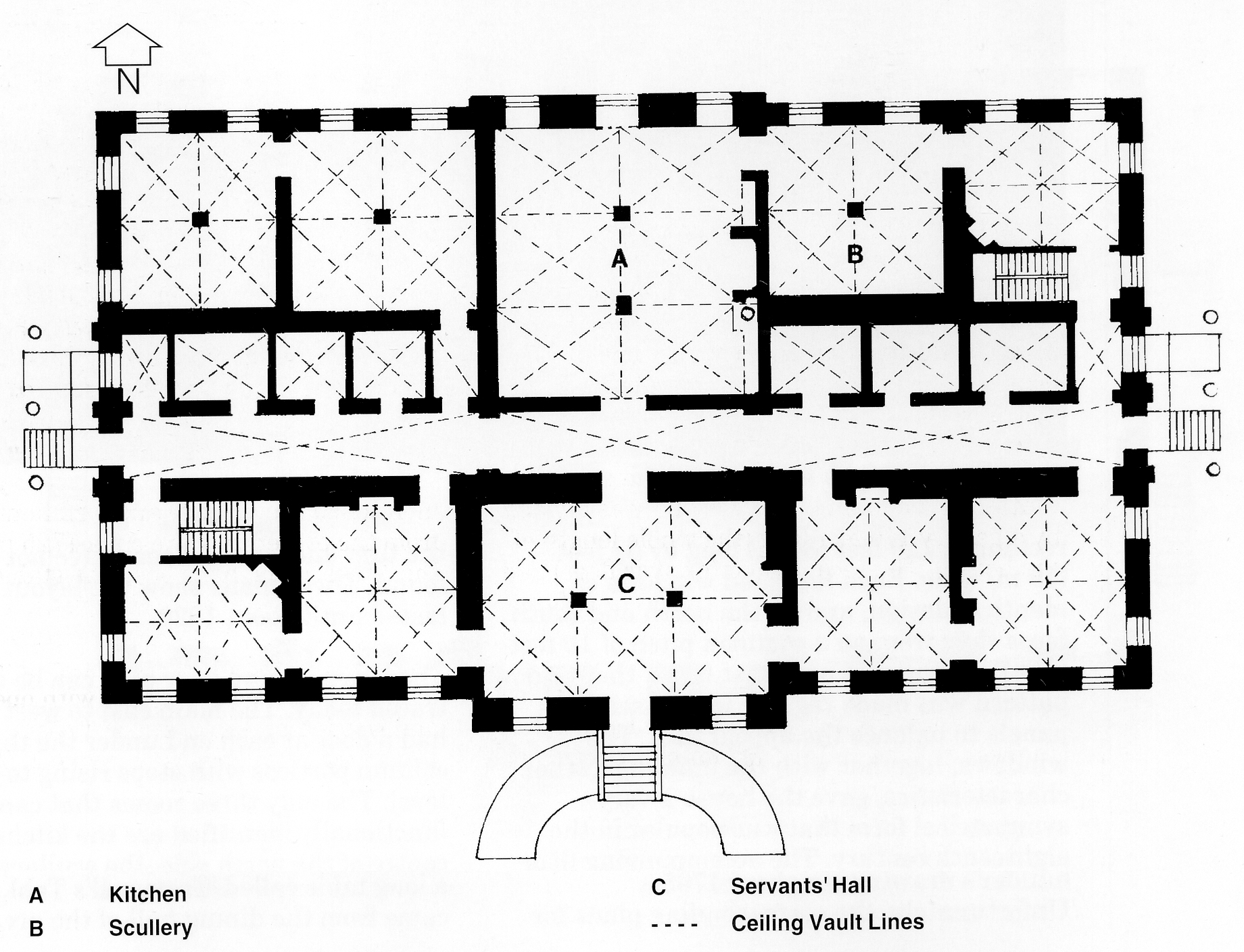 Lower ground floor plan (1724)
Lower ground floor plan (1724)
The ground floor or ‘principal storey’ was very different to the present layout, although the main walls still exist in part. The plan on page 36 shows the entrance hall (then having a stone floor) with the main entrance in the centre of the north side up a single flight of fanned, stone steps. The entrance hall extended over half the depth of the house. Behind the central entrance hall was the principal drawing room which took up the remaining depth of the house on the southern side.
Outside the drawing room on the south side was a double flight of stone steps that rose from the bowling green, turned, and joined in front of the drawing-room door, as shown in the engraving of the south elevation of Hursley House (1819) on page 37. Off the central entrance hall were two corridors leading to rooms that opened respectively to the east and west porticos. The three columns of each portico dictated that the east and west doors were off centre - a feature deplored by the celebrated Earl of Burlington, known for his love of building. The east and west porticos gave access to the gardens and stables respectively. The main staircase was next to the central entrance hall on the west side and seems to have served only the ground and first floors, access to the lower ground floor and second floor being via the domestic stairs at each end of the house. Also on the ground floor were other living rooms and the state bedroom with dressing room.
The first floor (called the chamber floor) contained the main bedrooms and was divided by a gallery 110 feet long (the whole length of the house). The second floor (or attic floor) had a long gallery similar to that on the first floor, but this was divided by a long wall on the north side that extended almost the whole length of the house; the wall separated female staff on the north side from the nursery and guest room on the south side. Descriptions of the inside of the house during this period are very scant.
The stables at this time almost certainly included part of the original wooden hunting lodge (the logge of 1413). The original coach house and stables (R Block today) - thought to have been built in the late 1600s - looked very much as they do today, with two small dormer windows in the hayloft. The present stable building was rebuilt in 1894 and appears to have followed the original architecture and to have been sited about 40 feet (14 m) to the south of the original building. To the west of the stables, which faced south, the coachmen and grooms lived in a two-storey building with cellars called the bothy (today’s T Block); this stands at right angles to the stables. This building is older than the stables and was probably built in the early 1600s. The antiquity of the bothy and the well house and brew house poses the question: Were any of the materials from the original wooden hunting lodge used in these later buildings, as with the house? Contained in the right angle formed by the stables (R Block) and living quarters (T Block) was the stable yard. On the north end of the two-storey living quarters were the previously mentioned brew house and well house which, from the evidence of the circa 1725 painting of the house, could have been the stable portion of the original wooden hunting lodge. The old stable appears to have wrapped around the north—west corner of these living quarters to provide a covered work area with open sides and wooden pillars to support the roof. The work area was replaced in about 1728 by the well and brew houses.
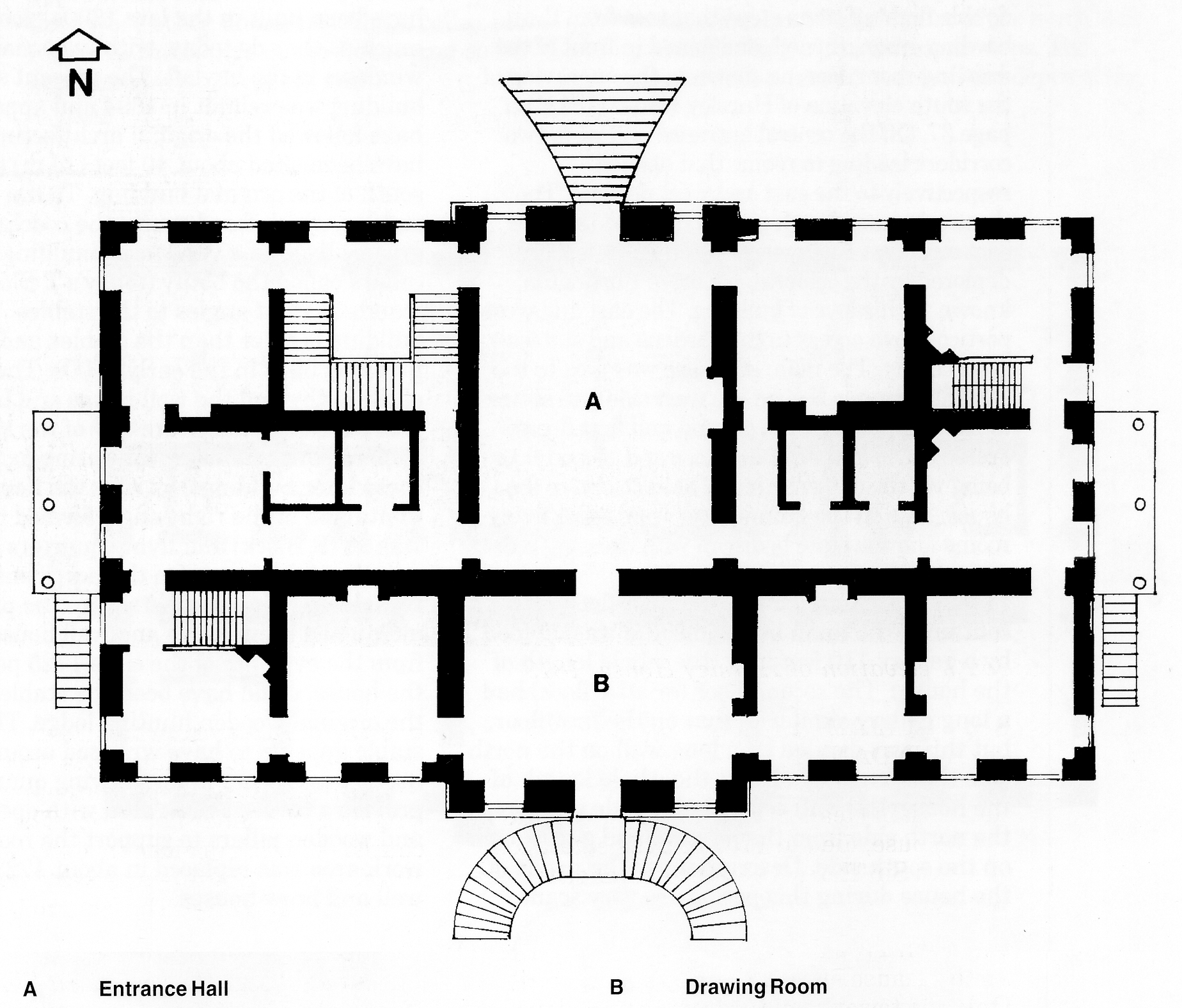 Ground floor plan (1724)
Ground floor plan (1724)
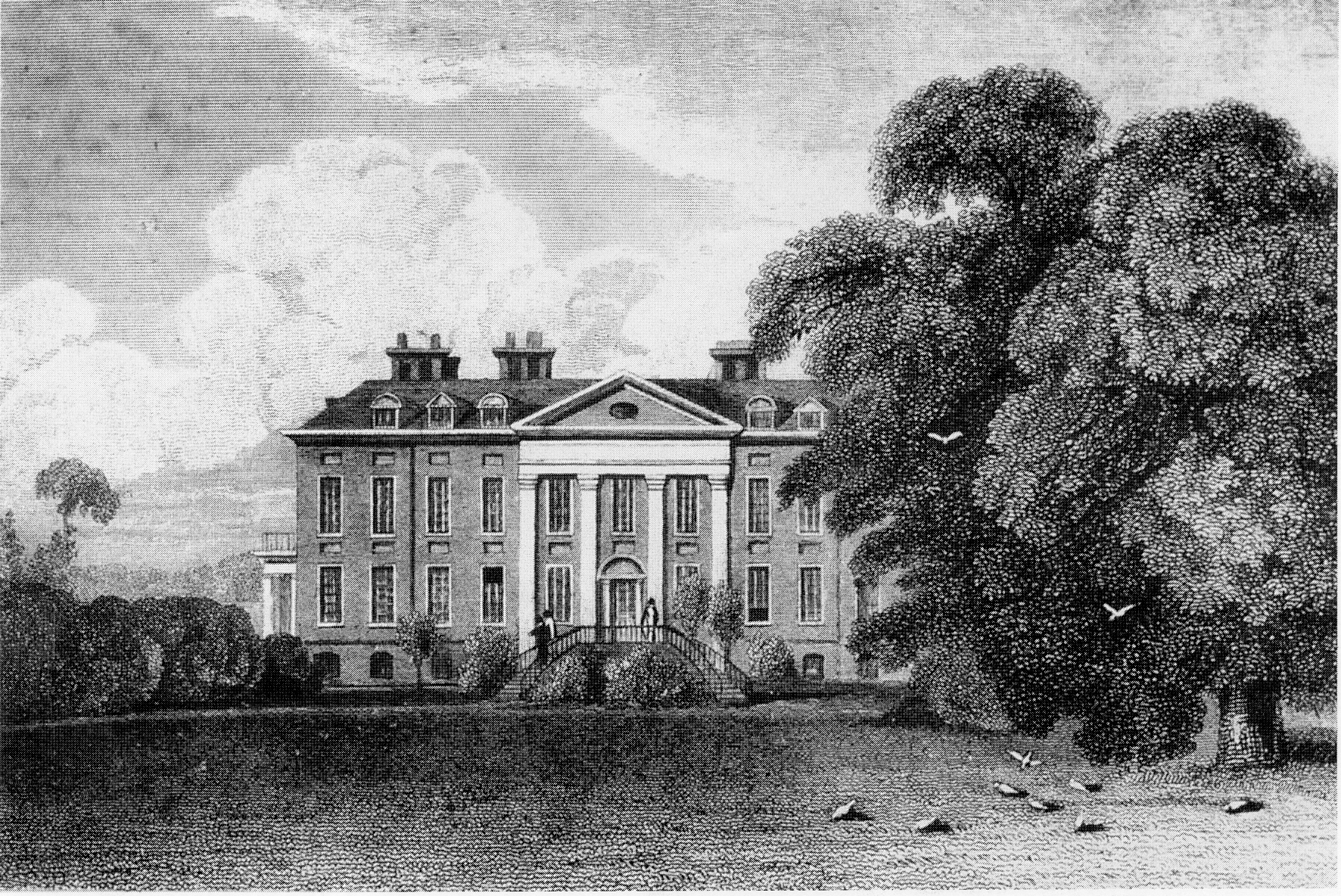 South elevation of Hursley House, 1819
South elevation of Hursley House, 1819